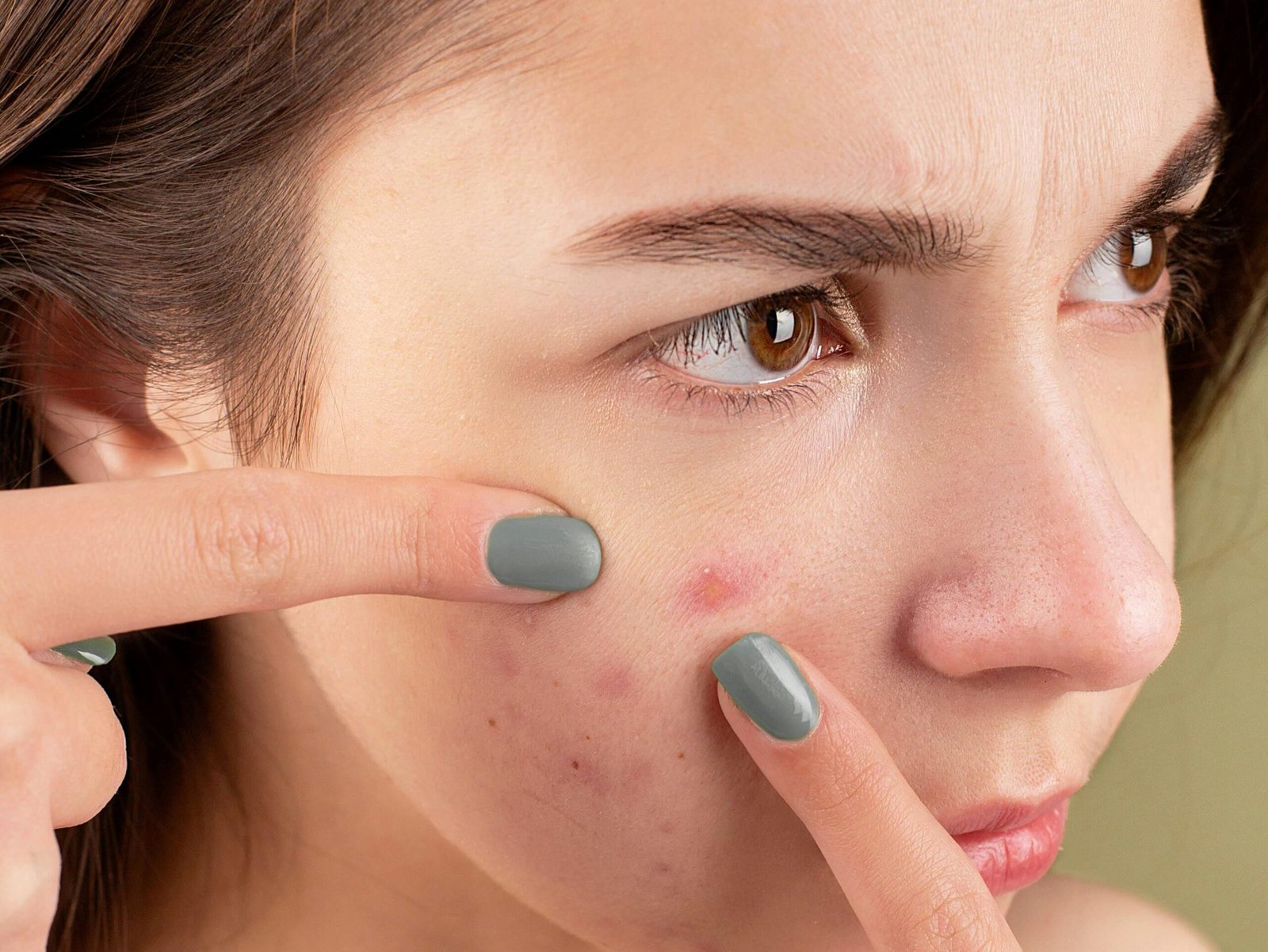
Have you ever woken up to a stubborn pimple right before an important event? You’re not alone! Pimples and acne breakouts can be frustrating, affecting confidence and skin health. Whether you struggle with occasional breakouts or persistent acne, knowing how to remove pimples permanently is key. The solution? A well-planned skincare routine for acne-prone skin combined with lifestyle changes.
By following these 20 most accurate ways to get rid of acne, you can achieve clear, healthy skin naturally.
Why Do Pimples and Breakouts Keep Coming Back? The Ugly Truth No One Tells You!
Ever felt like your acne has a mind of its own? You try everything—cleansers, serums, home remedies—but those stubborn breakouts always return. Why? Because acne isn’t just about what you put on your skin—it’s about what’s happening inside your body!
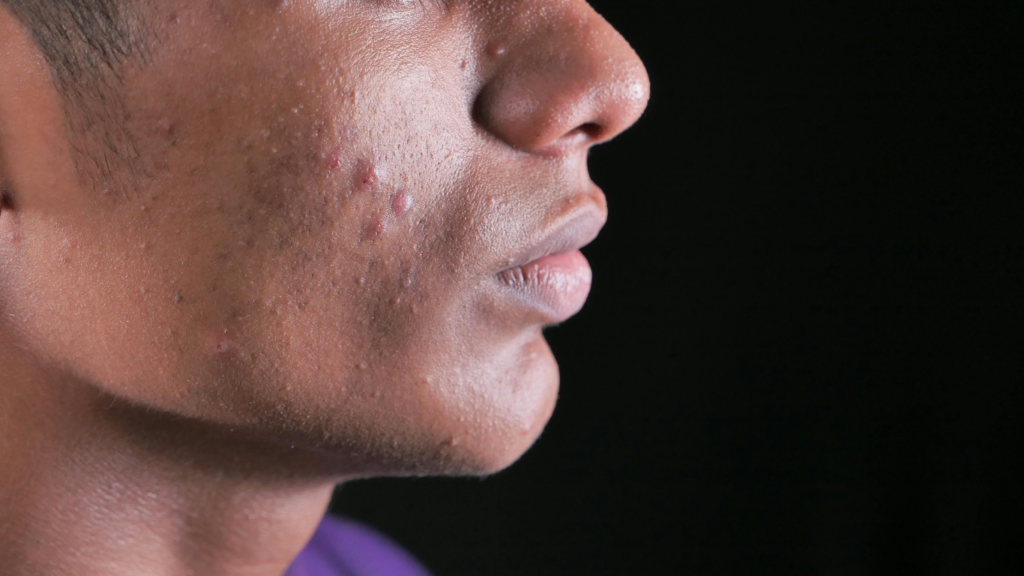
Your skin’s oil glands overproduce sebum, which mixes with dead skin cells and clogs pores—creating the perfect trap for acne-causing bacteria. This leads to painful, inflamed breakouts that refuse to go away. And the worst part? You might be making it worse without even knowing it!
STOP Ignoring These Hidden Acne Triggers! (You’re Probably Making These Mistakes!)
🚨 Hormonal Chaos – Puberty, pregnancy, stress—your hormones control your skin more than you think! A sudden breakout? Blame the hormonal rollercoaster.
🚨 Oil Overload & Clogged Pores – Your skin might be producing too much oil, leading to blackheads, whiteheads, and cystic acne. An oil-free face wash for acne can make all the difference!
🚨 Bacteria Attacks! – Pores become breeding grounds for bacteria, causing painful, red pimples. You need a targeted acne treatment that actually works!
🚨 Skincare & Makeup Sins – Heavy, greasy products clog pores and make breakouts worse. If it’s not non-comedogenic, it’s ruining your skin.
🚨 Diet Disaster – Your favorite snacks could be the real reason behind those breakouts! A healthy diet for acne and cutting out high-sugar foods could clear your skin faster than you think.
🚨 The Silent Skin Killers – Pollution, humidity, touching your face, dirty pillowcases—these everyday habits are silently sabotaging your clear skin goals!
The ULTIMATE Acne Solution—Do This Before It’s Too Late!
It’s time to ditch the ineffective skincare trends and take back control! Whether it’s mild breakouts or severe cystic acne, these scientifically proven, dermatologist-approved methods will finally help you achieve clear, glowing skin—faster than ever!
💥 Don’t wait for another breakout—take action NOW! 💥

1. Master the Perfect Skincare Routine—Because Your Skin Deserves Better!
Struggling with never-ending breakouts? The secret to clear, healthy skin lies in following the right acne-prone skincare routine—every single day! Stop using random products and start giving your skin what it actually needs!
✅ Ditch the Wrong Face Wash! – Your skin craves powerful acne-fighting ingredients like benzoyl peroxide or salicylic acid to deep-clean pores, remove excess oil, and prevent breakouts before they start!
✅ Moisturize the Smart Way! – Skipping moisturizer? Big mistake! Dehydrated skin produces even MORE oil, leading to more acne. Use a non-comedogenic, oil-free moisturizer to keep your skin balanced—without clogging pores.
✅ Shield Your Skin Daily! – Sun exposure makes acne scars darker and breakouts worse! A lightweight, acne-safe sunscreen is your skin’s best defense against UV damage and post-acne marks.
🔥 Your clear skin journey starts NOW! Stop waiting for results—take control today! 🔥
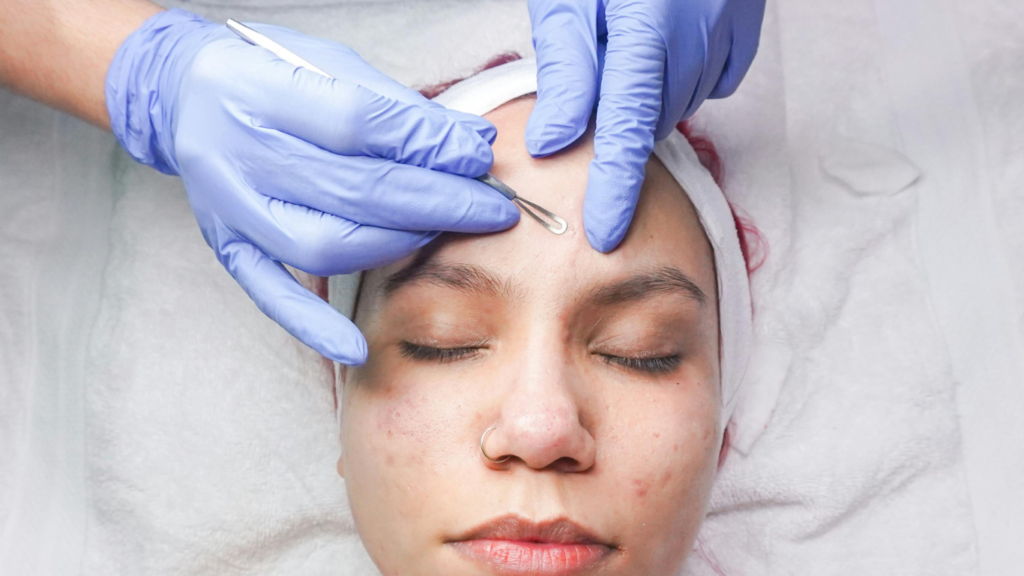
2. Stop Wasting Time—These Over-the-Counter Acne Treatments ACTUALLY Work!
Still waiting for your acne to clear up on its own? Stop the cycle! The right OTC acne treatments can fast-track your journey to blemish-free skin!
🔥 Benzoyl Peroxide – Your Acne’s Worst Enemy!
This powerful bacteria-fighter kills acne-causing germs, reduces swelling, and prevents future breakouts. No more waiting—get results fast!
🔥 Salicylic Acid – The Ultimate Pore Detox!
Break free from clogged pores and dead skin buildup! This ingredient deep cleans, removes blackheads, and stops acne before it even starts!
🔥 Retinoids – Your Secret to Smoother, Clearer Skin!
If you’re tired of uneven skin texture and constant breakouts, retinoids are a game-changer! They speed up skin renewal, unclog pores, and fade acne marks for a flawless finish.
💡 Don’t wait for perfect skin—start using these powerhouse ingredients TODAY and see the transformation!
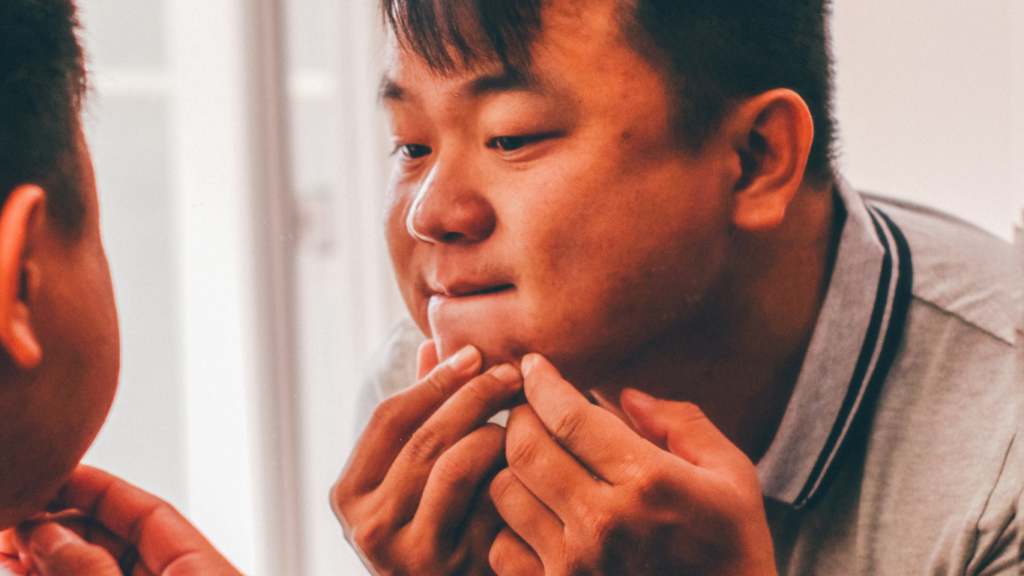
3. Stop! Popping Pimples Is Ruining Your Skin—Here’s What to Do Instead!
🚨 Think popping that pimple will make it go away faster? Think again! It might feel satisfying, but here’s the ugly truth:
❌ It Pushes Bacteria Deeper – Instead of getting rid of the pimple, popping forces bacteria and pus deeper into the skin, leading to even bigger breakouts!
❌ It Causes Acne Scars – That quick squeeze can leave dark spots and deep scars that take months (or even years!) to fade.
❌ It Delays Healing – A popped pimple takes longer to heal and often comes back even worse.
✅ The Smarter Way to Get Rid of Pimples Fast!
✔ Use a Spot Treatment – Apply benzoyl peroxide, salicylic acid, or tea tree oil to shrink the pimple without damage.
✔ Try a Pimple Patch – These absorb pus & bacteria overnight, reducing inflammation while you sleep.
✔ Let It Heal Naturally – Your skin knows how to repair itself—just give it time!
💡 Bottom line? Don’t pop—treat! Your future clear skin will thank you! 🚀

4. Your Makeup Might Be Causing Breakouts—Here’s How to Fix It!
🎭 Love wearing makeup? Your favorite products could be secretly clogging your pores and triggering acne!
❌ Heavy Foundations = Clogged Pores – Thick, oil-based makeup traps dirt and bacteria, leading to breakouts.
❌ Fragrance & Harsh Chemicals = Skin Irritation – Some beauty products contain irritants that cause redness, bumps, and inflammation.
❌ Sleeping in Makeup = Disaster! – Never go to bed with makeup on—it mixes with oil and bacteria, creating the perfect environment for pimples.
✅ How to Wear Makeup Without Worrying About Acne
✔ Choose Oil-Free & Non-Comedogenic Products – These won’t clog pores or cause breakouts.
✔ Lightweight BB Creams > Heavy Foundations – Less is more! Opt for breathable formulas.
✔ Always Remove Makeup Before Bed – Use a gentle, oil-free cleanser or micellar water to keep your skin clear.
✔ Clean Your Makeup Brushes Weekly – Dirty brushes = bacteria buildup, leading to acne flare-ups!
💡 Makeup should enhance your skin—not damage it. Switch to acne-safe products and enjoy flawless, breakout-free beauty! ✨

5. Oily Skin? Stop the Shine Before It Causes Breakouts!
🌟 Struggling with greasy skin that won’t quit? Oily skin isn’t just annoying—it’s one of the biggest acne triggers!
❌ Excess Oil = Clogged Pores & Breakouts – Too much sebum traps dirt and dead skin cells, leading to blackheads, whiteheads, and pimples.
❌ Wrong Skincare = More Oil Production – Overwashing or using harsh cleansers strips your skin, causing it to produce even more oil as a defense mechanism.
❌ Touching Your Face = Acne Worsens – Your hands transfer bacteria and oil, clogging pores and causing breakouts.
✅ How to Control Oily Skin & Prevent Pimples
✔ Use a Gentle, Oil-Free Face Wash for Acne – Ingredients like salicylic acid or benzoyl peroxide help absorb excess oil.
✔ Blot, Don’t Wipe! – Oil-blotting papers instantly remove shine without irritating the skin.
✔ Hydration is Key – Use a lightweight, non-comedogenic moisturizer to keep skin balanced (yes, even oily skin needs hydration!).
✔ Clay Masks Work Wonders – 1-2 times a week, use a clay mask to absorb extra oil and keep your skin matte.
💡 Oily skin doesn’t have to mean constant breakouts—follow these tips and stay shine-free all day! ✨
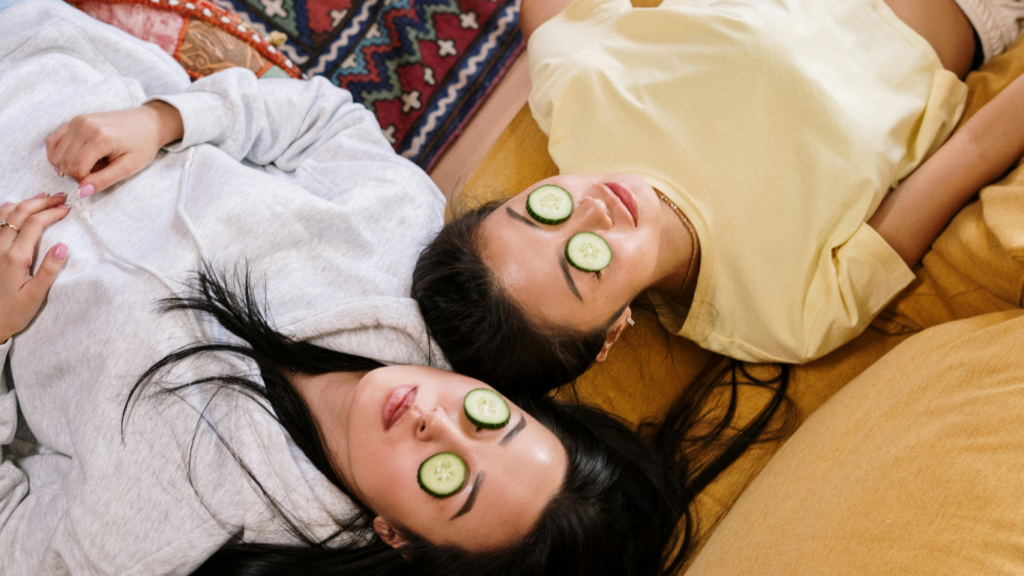
6. Clear Your Skin Naturally – Try These Home Remedies That Actually Work!
🌿 Tired of harsh chemicals? Want a natural way to fight acne? These home remedies are backed by science and loved by skincare experts!
🔥 Best Natural Acne Treatments for Clear Skin
✔ Tea Tree Oil – A powerful antibacterial that fights acne-causing bacteria and reduces redness. Apply a diluted amount to affected areas.
✔ Honey & Cinnamon Mask – A natural anti-inflammatory duo that soothes irritation and kills bacteria. Mix raw honey and cinnamon, apply for 10-15 minutes, and rinse off.
✔ Aloe Vera Gel – Known for its healing properties, aloe vera reduces redness, calms inflammation, and hydrates acne-prone skin. Apply a thin layer overnight for best results.
💡 Why go for expensive treatments when nature has given us skin-loving solutions? Try these remedies today and wake up to healthier skin! 🌱✨

7. Eat Your Way to Clear Skin – The Best Diet for Acne-Free Glow!
🍽️ Did you know that what you eat can either trigger breakouts or help you achieve clear skin? Your diet plays a huge role in acne control!
❌ Foods to Avoid (They Can Worsen Acne!)
🚫 Sugary Foods – High sugar spikes insulin, leading to increased oil production and clogged pores.
🚫 Dairy Products – Some studies suggest dairy, especially milk, may contribute to breakouts.
✅ Foods to Include (For Healthy, Glowing Skin!)
🥑 Omega-3 Rich Foods – Found in fish, flaxseeds, and walnuts, these help reduce inflammation and keep your skin clear.
🥦 Antioxidant-Packed Veggies – Leafy greens, carrots, and bell peppers help fight acne from within.
💧 Plenty of Water – Hydrated skin is less likely to break out.
💡 What you put on your skin matters, but what you put IN your body matters even more! Start making small changes today for long-term acne control! 🌟
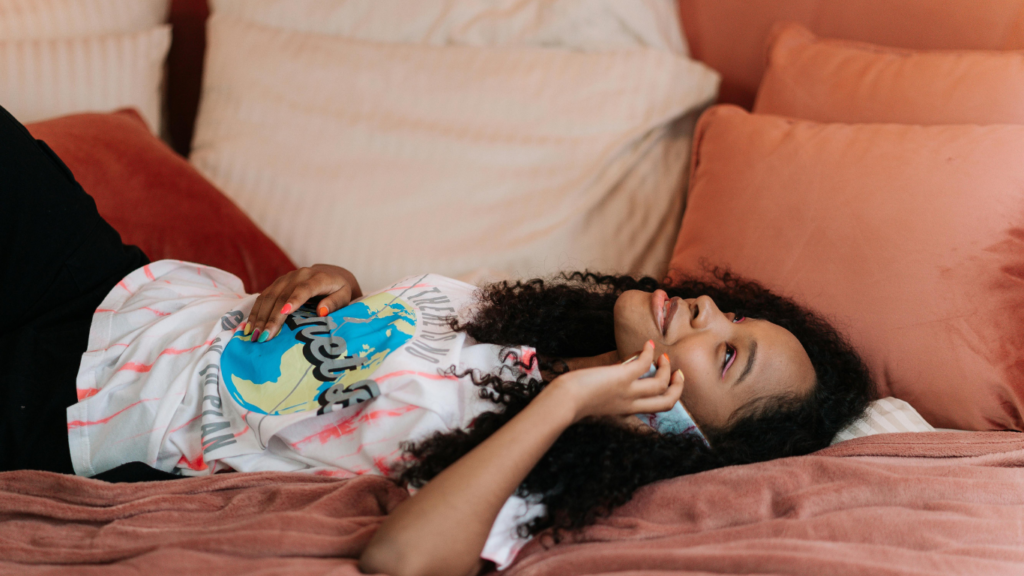
8. Your Pillowcase & Phone Might Be Causing Breakouts – Fix It Now!
🛏️ Did you know that your pillowcase and phone collect dirt, oil, and bacteria that can clog your pores and trigger acne?
🔄 How to Prevent Acne from Dirty Pillowcases & Phones
🛌 Change Your Pillowcase Regularly – Dirt, oil, and bacteria build up over time. Switch to a clean pillowcase at least twice a week to reduce breakouts.
📱 Disinfect Your Phone Daily – Your phone touches your face multiple times a day. Wipe it with an alcohol-based cleaner to remove bacteria and oil that can cause acne.
💡 Small changes in your daily routine can make a big difference in preventing breakouts! Start today for clearer, healthier skin! ✨
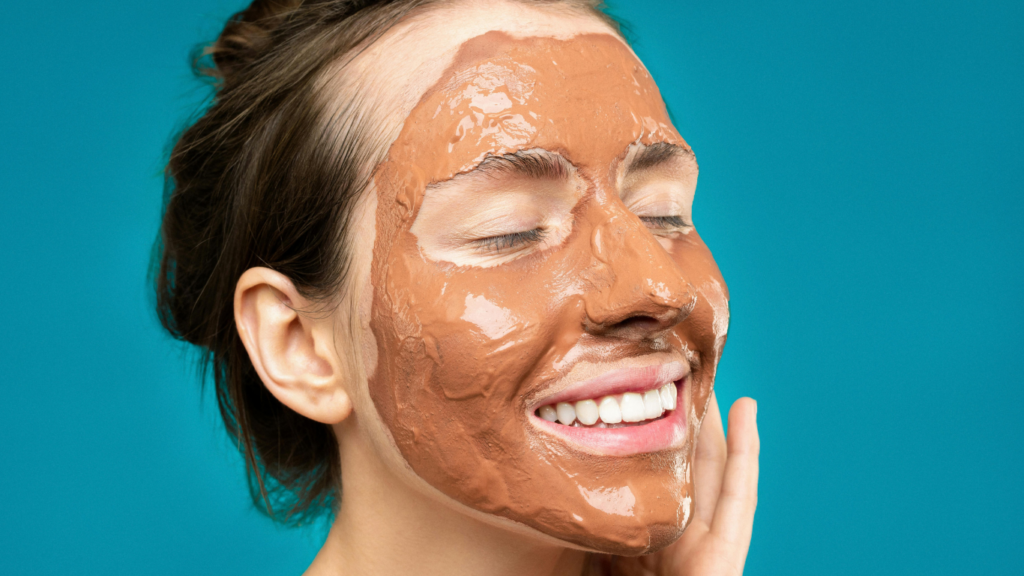
9. Struggling with Oily Skin? A Clay Mask Can Be Your Game-Changer!
🧖♀️ Excess oil leads to clogged pores, blackheads, and breakouts—but a clay mask can help!
🌿 Why You Need a Clay Mask for Acne-Prone Skin
✔ Absorbs Excess Oil – Controls shine and prevents clogged pores.
✔ Unclogs Pores – Removes dirt, dead skin cells, and toxins.
✔ Prevents Blackheads & Acne – Keeps your skin balanced and breakout-free.
💡 Use a clay mask 1-2 times a week for clear, healthy skin! Don’t wait—add it to your skincare routine now! 🚀✨
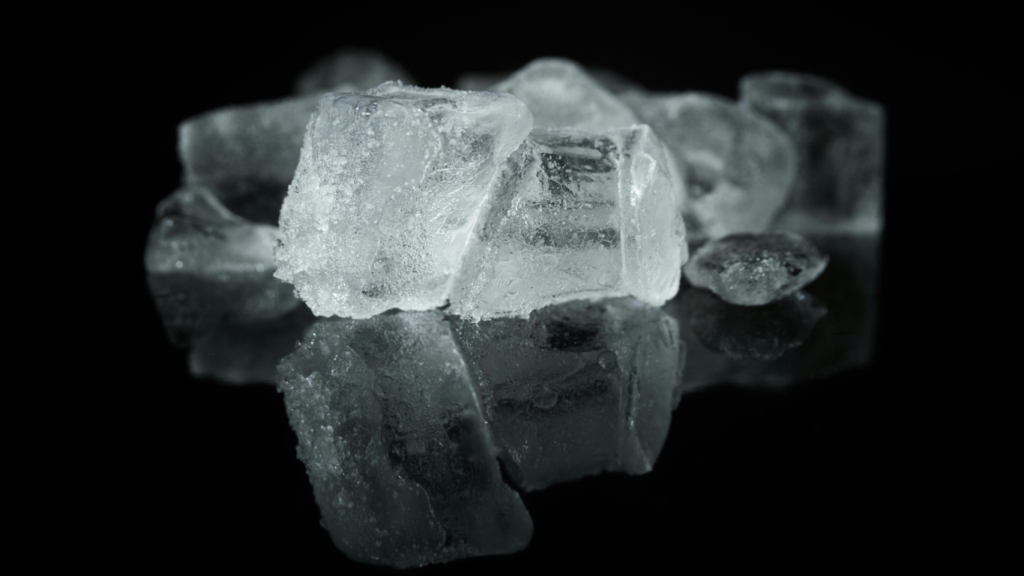
10. Try Ice to Reduce Redness and Swelling
Applying ice to pimples is a quick and natural way to calm inflammation and redness.
Why Use Ice on Pimples?
✔ Reduces Swelling – Ice constricts blood vessels, minimizing pimple size.
✔ Soothes Redness – Helps calm irritation and redness.
✔ Numbs Pain – Provides relief from painful, inflamed breakouts.
How to Use Ice for Acne?
- Wrap an ice cube in a soft cloth or paper towel (never apply ice directly to the skin).
- Hold it on the affected area for 1–2 minutes.
- Remove for a minute, then reapply if needed.
When to Use Ice for Pimples?
🗓 Use it once or twice a day when you notice a swollen pimple forming. Best used before applying treatments or spot creams.

11. Use Niacinamide (Vitamin B3) for Clearer Skin
Niacinamide is a powerful ingredient that helps control acne, reduce oil production, and fade scars.
Why Use Niacinamide for Acne?
✔ Regulates Oil Production – Prevents excess sebum that clogs pores.
✔ Reduces Inflammation – Soothes red, inflamed pimples.
✔ Fades Acne Marks – Helps lighten scars and hyperpigmentation.
✔ Strengthens Skin Barrier – Improves skin’s ability to retain moisture.
How to Use Niacinamide?
- Choose a serum or moisturizer with 2–5% niacinamide.
- Apply it after cleansing and before moisturizing.
- Use it once or twice daily for best results.
When to Use Niacinamide?
🗓 Morning & Night – Works well in both AM and PM routines.
🚫 Avoid mixing with high concentrations of vitamin C at the same time.
This simple addition to your skincare can make a big difference in keeping your skin balanced and acne-free! 😊
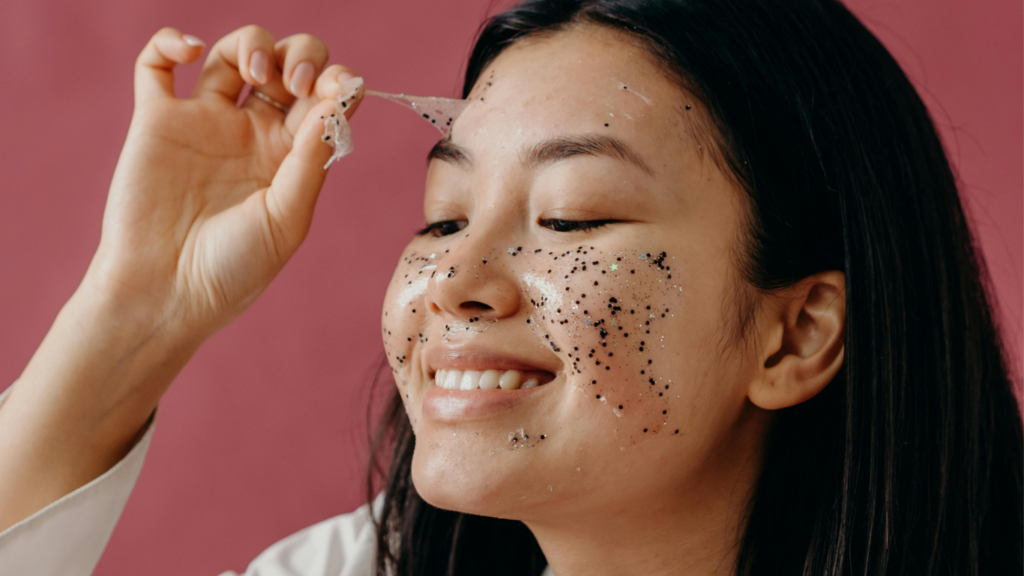
12. Exfoliate Regularly for Clearer Skin
Exfoliation is key to removing dead skin cells, preventing clogged pores, and keeping your skin smooth and acne-free.
Why Exfoliate for Acne-Prone Skin?
✔ Unclogs Pores – Helps remove excess oil, dirt, and dead skin.
✔ Prevents Breakouts – Reduces the chances of blackheads and pimples.
✔ Improves Skin Texture – Promotes a smoother and more even skin tone.
How to Exfoliate Properly?
- Use a gentle exfoliant with salicylic acid or glycolic acid.
- Apply it 2–3 times a week after cleansing.
- Avoid using harsh scrubs, as they can irritate the skin and worsen acne.
When to Exfoliate?
🗓 Evening Routine – Best done at night to allow skin to heal overnight.
❄ Before Applying Treatments – Helps active ingredients absorb better.
Regular exfoliation keeps your pores clear and your skin glowing without irritation! ✨.
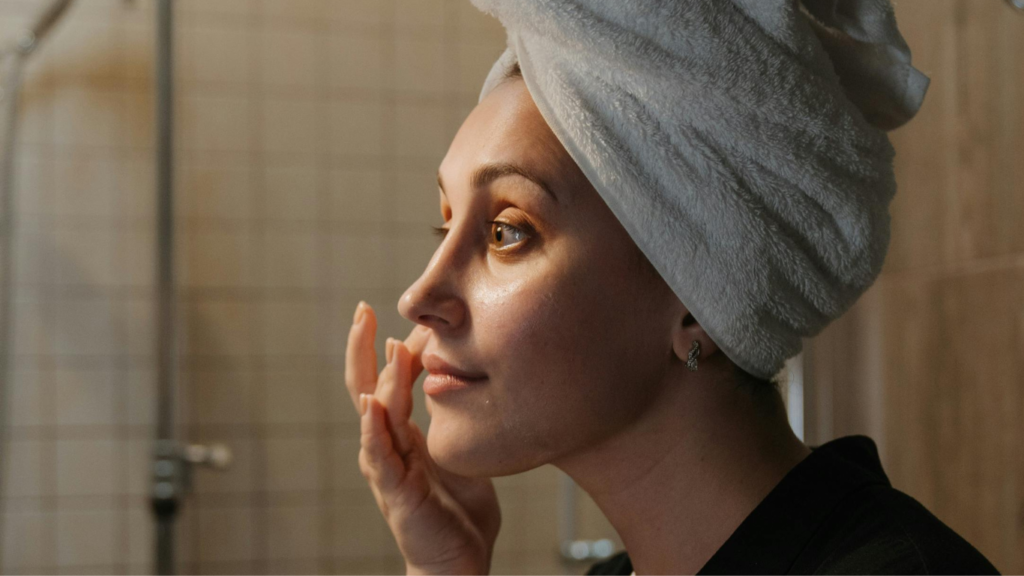
13. Keep Your Skin Hydrated for Healthy, Acne-Free Skin
Hydration is essential for maintaining a healthy skin barrier and preventing excess oil production, which can lead to breakouts.
Why Hydration is Important for Acne-Prone Skin?
✔ Balances Oil Production – Dehydrated skin produces more oil, leading to clogged pores.
✔ Supports Healing – Well-hydrated skin repairs itself faster.
✔ Reduces Irritation – Prevents dryness caused by acne treatments.
How to Keep Your Skin Hydrated?
- Use a lightweight, oil-free, non-comedogenic moisturizer.
- Look for ingredients like hyaluronic acid and ceramides for deep hydration.
- Drink plenty of water throughout the day to keep skin hydrated from within.
When to Hydrate Your Skin?
✔ Morning: Apply a lightweight, oil-free moisturizer after cleansing to lock in hydration and prep your skin for the day.
✔ Before Makeup: Hydrated skin creates a smooth base, preventing dryness and flakiness.
✔ After Cleansing: Always follow up with a moisturizer after washing your face to prevent moisture loss.
✔ Before Bed: Use a nourishing, non-comedogenic night cream to repair and hydrate your skin overnight.
✔ After Using Acne Treatments: Acne treatments like benzoyl peroxide and salicylic acid can dry out the skin—moisturizing helps prevent irritation and peeling.
💧 Pro Tip: Hydration isn’t just about skincare—drink plenty of water and eat water-rich foods like cucumbers and watermelon to keep your skin glowing from within!
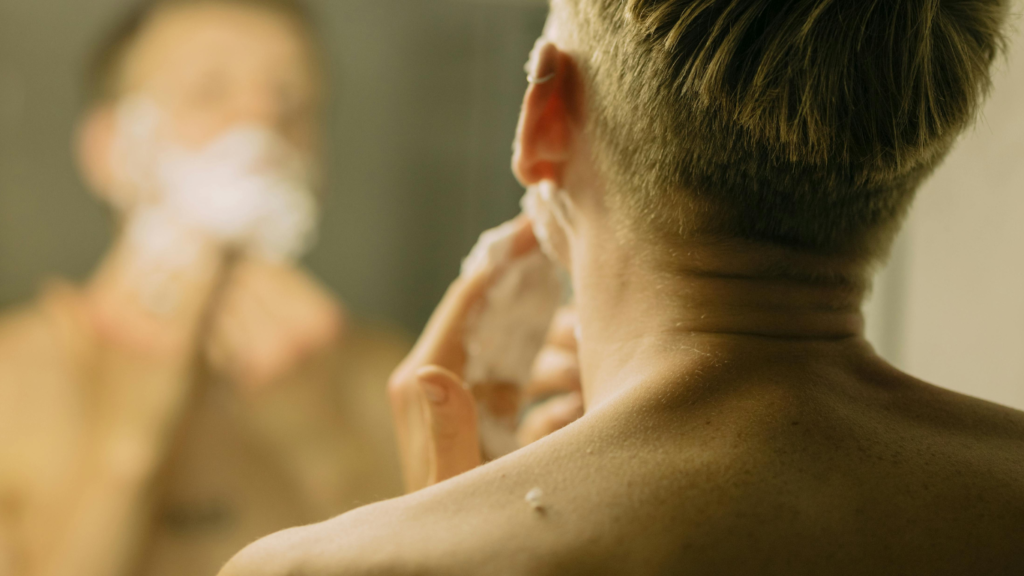
14. Use an Electric Razor for Acne-Prone Skin
Shaving can be harsh on acne-prone skin, leading to irritation, redness, and breakouts. Switching to an electric razor can help reduce these issues.
Why Use an Electric Razor?
✔ Minimizes Skin Irritation – Unlike traditional razors, electric razors don’t drag directly on the skin, reducing friction.
✔ Prevents Razor Bumps & Breakouts – Reduces the risk of ingrown hairs and irritation.
✔ Gentler on Sensitive Skin – Ideal for acne-prone skin that reacts to manual shaving.
How to Shave with an Electric Razor for Acne?
- Use a Pre-Shave Cleanser – Wash your face with a gentle face wash for acne to remove oil and dirt.
- Shave in the Direction of Hair Growth – Avoid pressing too hard to prevent irritation.
- Apply a Lightweight Moisturizer – Use an oil-free, non-comedogenic moisturizer post-shave to soothe the skin.
When to Shave for Best Results?
✔ Shave after a warm shower when the skin is soft and pores are open.
✔ Avoid shaving over active breakouts to prevent further irritation.

15. Keep Hair Products Away from Your Face
Hair products can contribute to acne, especially along the forehead, hairline, and cheeks. Many styling products contain oils, silicones, and fragrances that can clog pores and trigger breakouts.
Why Avoid Hair Products on Your Face?
✔ Prevents Pore Clogging – Oils and waxes in hair products can transfer to your skin and block pores.
✔ Reduces Breakouts Along the Hairline – Keeps forehead and temple areas free from acne.
✔ Minimizes Skin Irritation – Harsh ingredients in styling gels and sprays can cause inflammation.
How to Prevent Hair Products from Causing Acne?
- Use Non-Comedogenic Hair Products – Choose lightweight, oil-free formulas that won’t clog pores.
- Keep Hair Away from Your Face – Tie your hair back, especially when sleeping or sweating.
- Wash Your Face After Applying Hair Products – This removes any residue that may have transferred to your skin.
When to Be Extra Cautious?
✔ After applying hair gels, serums, or sprays.
✔ During workouts when sweat can spread hair product residue to your skin.
✔ Before bed—make sure your pillowcase is free from product buildup.
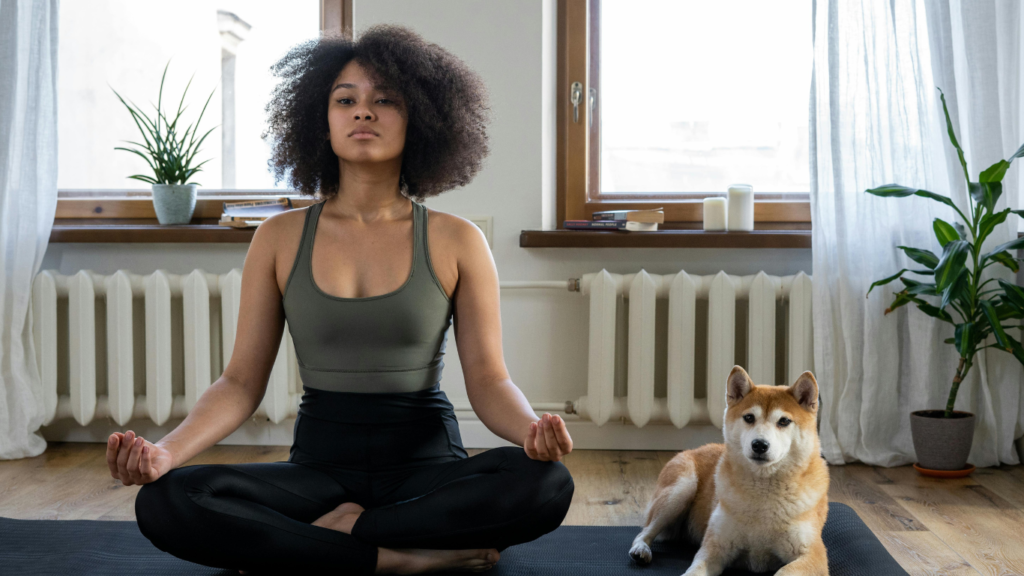
16. Manage Stress to Prevent Breakouts
Stress and acne are closely linked—when you’re stressed, your body produces more cortisol, which increases oil production and triggers breakouts. Managing stress can help keep your skin clear and healthy.
Why Does Stress Cause Acne?
✔ Increases Oil Production – Leads to clogged pores and pimples.
✔ Triggers Inflammation – Can make existing acne worse.
✔ Disrupts Hormonal Balance – Hormonal fluctuations due to stress contribute to breakouts.
How to Reduce Stress for Clearer Skin?
- Practice Relaxation Techniques – Try yoga, deep breathing, or meditation to calm your mind.
- Exercise Regularly – Physical activity reduces stress hormones and boosts circulation for healthier skin.
- Get Enough Sleep – Poor sleep increases stress levels and worsens acne. Aim for 7–8 hours of sleep per night.
When to Focus on Stress Management?
✔ During high-pressure situations like exams or deadlines.
✔ After experiencing emotional or physical stress.
✔ If you notice frequent breakouts during stressful times.

17. Get Expert Advice from a Dermatologist
If over-the-counter treatments aren’t working or acne is leaving scars, it’s time to consult a dermatologist. Professional guidance can help you find the best treatment for your skin type and severity of acne.
Why See a Dermatologist for Acne?
✔ Personalized Treatment – They analyze your skin and suggest the most effective solutions.
✔ Stronger Medications – Prescription-strength retinoids, antibiotics, or hormonal therapy may be necessary.
✔ Advanced Procedures – Treatments like chemical peels, laser therapy, and microdermabrasion can reduce acne scars and stubborn breakouts.
How Can a Dermatologist Help?
- Diagnose the Root Cause – Identifies whether hormones, bacteria, or lifestyle are causing your acne.
- Prescribe Medications – Stronger treatments like oral antibiotics or isotretinoin may be recommended for severe cases.
- Recommend Professional Procedures – If acne is persistent, procedures like chemical peels, blue light therapy, or laser treatment may be suggested.
When to See a Dermatologist?
✔ If acne doesn’t improve after 3 months of treatment.
✔ If you have severe, cystic, or painful acne.
✔ If acne is causing scarring or emotional distress.
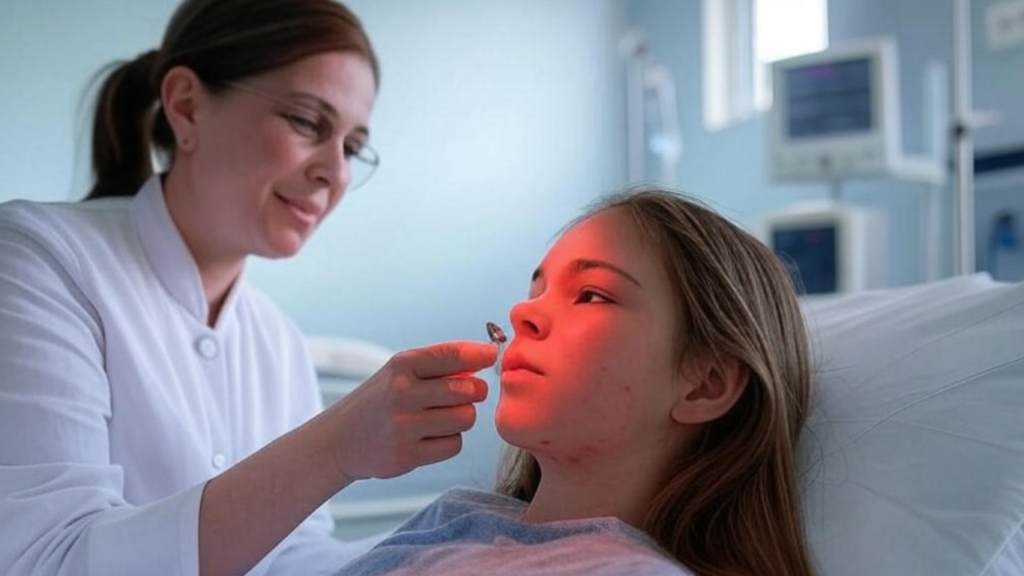
18. Light Therapy for Acne
Light therapy is an effective, non-invasive acne treatment that helps reduce breakouts by targeting bacteria and inflammation. It’s a great option for those looking to improve their skin without using harsh chemicals.
Why Use Light Therapy for Acne?
✔ Kills Acne-Causing Bacteria – Blue light therapy eliminates Propionibacterium acnes, the bacteria responsible for breakouts.
✔ Reduces Inflammation – Red light therapy soothes the skin, reduces redness, and promotes healing.
✔ Non-Invasive & Safe – Ideal for sensitive skin types with minimal side effects.
How to Use Light Therapy?
- At-Home Devices – LED masks or handheld light therapy devices are available for regular use.
- Professional Treatments – Dermatologists offer stronger light therapy sessions for severe acne.
- Consistency is Key – Use light therapy several times a week for best results.
When to Use Light Therapy?
✔ If you have mild to moderate acne and want a chemical-free solution.
✔ If you experience redness and inflammation from breakouts.
✔ If you want to boost the effectiveness of your current acne treatment routine.
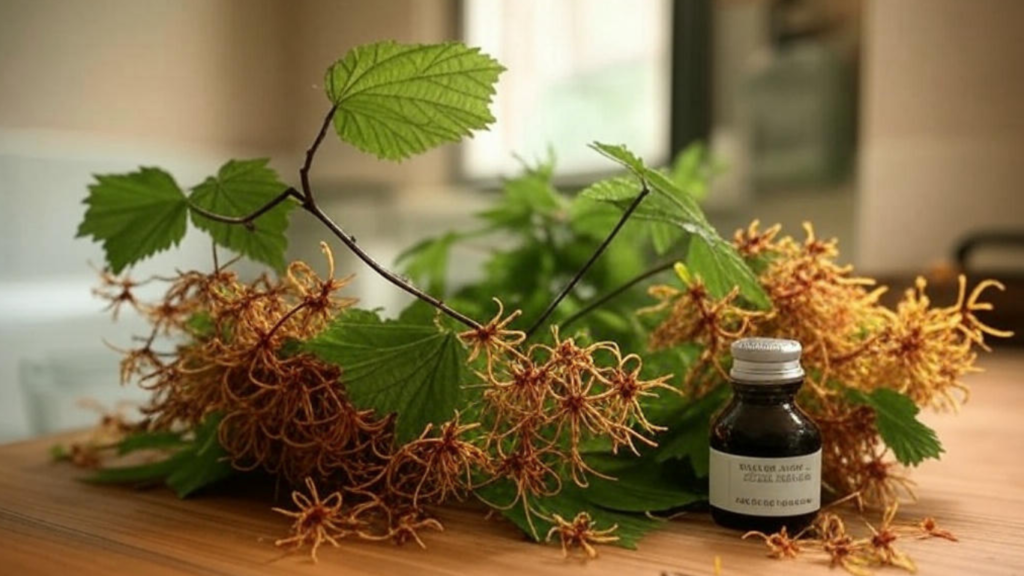
19. Use Witch Hazel
Witch hazel is a natural astringent that helps tighten pores, reduce excess oil, and soothe irritated skin. It is a great addition to an acne-prone skincare routine for those looking for a gentle yet effective way to manage breakouts.
Why Use Witch Hazel for Acne?
✔ Controls Oil Production – Helps remove excess oil without over-drying the skin.
✔ Reduces Inflammation – Calms redness and irritation caused by acne.
✔ Prevents Breakouts – Keeps pores clean and minimizes the risk of future pimples.
How to Use Witch Hazel?
- After Cleansing – Apply a small amount to a cotton pad and gently swipe over your face.
- As a Spot Treatment – Dab directly onto active pimples to reduce swelling.
- As a Toner – Use daily before applying moisturizer for balanced skin.
When to Use Witch Hazel?
✔ After washing your face to remove any leftover dirt or oil.
✔ When you notice oily skin or redness throughout the day.
✔ If you need a natural alternative to harsh acne treatments.
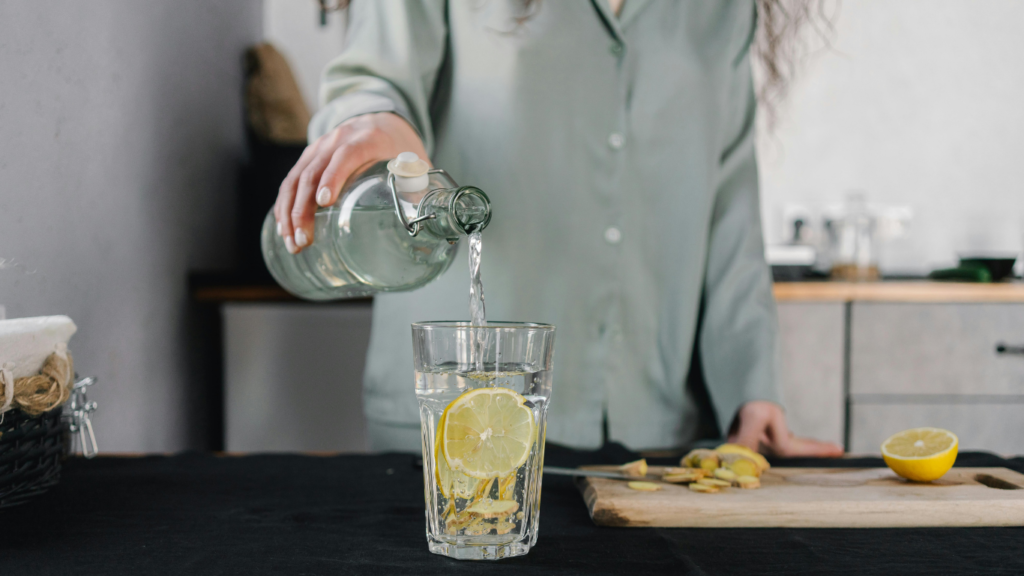
20. Sleep Well and Stay Hydrated
Getting enough sleep and staying hydrated are essential for maintaining clear, healthy skin. Poor sleep and dehydration can trigger acne by increasing stress hormones and reducing the skin’s ability to heal.
Why Are Sleep and Hydration Important for Acne?
✔ Reduces Stress Hormones – Poor sleep increases cortisol, which leads to more oil production and breakouts.
✔ Promotes Skin Repair – While you sleep, your skin regenerates and heals acne scars.
✔ Flushes Out Toxins – Drinking enough water helps remove toxins that may contribute to acne.
How to Improve Sleep and Hydration?
- Stick to a Sleep Schedule – Aim for 7–8 hours of sleep every night.
- Avoid Blue Light Before Bed – Reduce screen time to improve sleep quality.
- Drink Enough Water – Aim for 8–10 glasses daily to keep your skin hydrated.
- Limit Caffeine and Sugary Drinks – These can dehydrate your skin and trigger breakouts.
When to Prioritize Sleep and Hydration?
✔ If you experience frequent breakouts, especially during stressful times.
✔ When your skin appears dull, dry, or irritated.
✔ Before and after using acne treatments to help the skin recover.
Conclusion
Achieving clear, healthy skin requires consistent skincare, lifestyle adjustments, and patience. By following these 20 scientifically-backed methods, you can reduce acne breakouts and improve skin health.
Remember, everyone’s skin is different—what works for one person may not work for another. Stay consistent with your acne-prone skincare routine, be mindful of your diet and stress levels, and choose non-comedogenic products to prevent clogged pores.
If persistent acne continues to be a concern, consulting a dermatologist can help you find a personalized treatment plan for long-term skin health.
💡 What acne remedy has worked best for you? Share your experience in the comments!
📢 Know someone struggling with acne? Send them this guide!
📍 For more skincare tips, visit SearchYourFitness.com!
Sources & References
- American Academy of Dermatology (AAD): Acne Treatment Guidelines
- Mayo Clinic: Acne Causes & Treatments
- Harvard Health Publishing: Understanding Acne & Prevention
- Cleveland Clinic: Acne Overview & Best Practices
- National Institute of Arthritis and Musculoskeletal and Skin Diseases (NIAMS): Acne Facts & Research
- Journal of the American Academy of Dermatology: Studies on Acne & Diet
- Journal of Dermatological Science: Research on Light Therapy & Natural Acne Treatments
FAQs
Can exercise help clear acne?
Yes! Regular exercise improves blood circulation and reduces stress, both of which help your skin. Just make sure to shower and cleanse your face after sweating to prevent clogged pores.
Does drinking coffee or tea cause acne?
It depends! Excess caffeine can increase stress hormones, leading to breakouts. Also, sugary or dairy-based drinks may trigger acne in some people. Try switching to black coffee, herbal tea, or plant-based milk if you notice breakouts.
Can touching my face too often cause acne?
Yes! Your hands carry dirt and bacteria, which can clog pores and trigger breakouts. Avoid touching your face and wash your hands frequently.
Does air pollution make acne worse?
Yes! Pollution clogs pores with dirt and toxins, leading to acne and dull skin. Cleanse your face twice daily and use an antioxidant-rich moisturizer to protect your skin.
Can sleeping on a dirty pillowcase cause acne?
Yes! Pillowcases collect oil, sweat, and bacteria from your skin and hair. If not changed regularly, they can lead to breakouts. Try switching to a clean pillowcase every 2-3 days and using silk or cotton fabric for better skin health.
CLICK HERE TO READ US ON QUORA
YOUR NEEDS 😉
Click any tool below to explore and calculate instantly!


